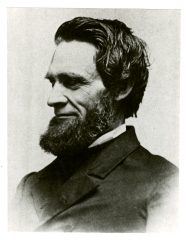

that the Boards had not been consulted officially before the bill was introduced. The faculty, with the exception of Dr. Kendrick, Eaton and Spear, sought its enactment and Professors Raymond and A. C. Kendrick presented their views at Albany.
When the bill came before the appropriate committee of the Assembly, Smith Sheldon, who seems to have been the chief lobbyist, persuaded several members of both houses to attend its meetings to hear the arguments for his side. As a sop to the Anti-Removalists Ira Harris had proposed to their counsel, Judge Charles Mason of Hamilton, that the University Board be authorized to change the location only if the residents of the village failed to obtain the endowment by August, 1848. Following acceptance of the compromise by the Hamiltonians, the Legislature passed the bill and the Governor signed it on April 3, 1848.
Professor Eaton and Dr. Kendrick were pleased with the outcome, and the citizens of Hamilton also until they began to appreciate the strenuous effort required to raise the $50,000. Smith Sheldon, who doubted their ability to do so, believed nevertheless that any attempt at removal without giving them a chance to keep the University would mean litigation and possible negative action by the Boards. He counted on their failure to force them to agree to a new location. Dr. Conant, who feared they might succeed, wrote Professors Raymond and A.C. Kendrick that in such an event “we must contrive some way of escape before it is too late.”
During the spring and summer of 1848 the citizens of Hamilton







